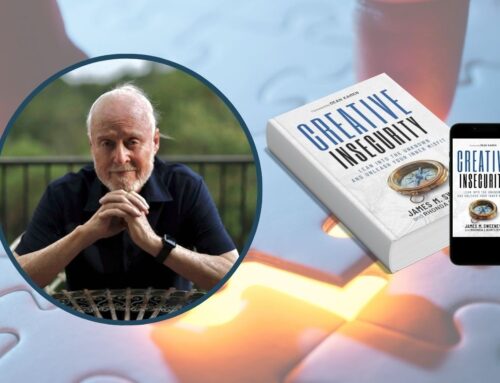
Key Takeaways:
- Turning insecurity into an advantage starts with reframing fear as fuel for growth
and innovation. - Self-doubt can drive deeper thinking, better problem-solving, and more adaptable
decision-making. - Perfectionism often hinders progress—rapid iteration and feedback are key to
momentum.
Turning insecurity into an advantage may sound counterintuitive, but for many of the world’s most successful entrepreneurs, self-doubt isn’t a flaw—it’s fuel. In fact, some of the most groundbreaking ideas are born not from certainty, but from the tension that insecurity creates. When embraced rather than avoided, insecurity becomes a catalyst for personal growth, creative thinking, and business innovation.
The Paradox of Creativity: Insecurity vs. Innovation
There’s a widespread belief that confidence is a prerequisite for creativity—but history proves otherwise. Many of the world’s most innovative authors, inventors, and entrepreneurs grappled with self-doubt. Rather than hinder them, this insecurity drove them to question, refine, and ultimately elevate their work.
When used intentionally, insecurity can be a competitive advantage. It prompts deeper problem-solving, heightens adaptability, and encourages iteration—all critical traits for thriving in business.
Common Misconceptions About Confidence and Creativity
Many people believe that confidence is essential for creativity—but this myth can block real progress. In reality, self-doubt often leads to deeper thinking and a relentless pursuit of improvement.
Another misconception is that successful entrepreneurs are fearless. In reality, most high achievers openly wrestle with self-doubt. What sets them apart is their ability to move forward anyway—transforming insecurity into an advantage rather than a roadblock.
Finally, the idea that perfectionism guarantees success is misleading. Waiting for a “perfect” idea often stifles creativity. Acting on what you have, then refining it through iteration, is what drives true innovation.

Strategies to Turn Creative Insecurity into an Advantage
Transforming insecurity into an advantage starts with shifting your mindset. These strategies can help you channel creative self-doubt into forward momentum and breakthrough ideas.
- See Fear as Fuel
Fear doesn’t have to be a roadblock—it can be your engine. Fear of failure can push you to prepare more, refine ideas, and seek innovative solutions.
- Progress Over Perfection
Perfectionism can stall creativity. Instead, embrace rapid iteration: start with what you have, test it, gather feedback, and refine. This approach not only keeps you moving—it turns your insecurity into an advantage by making growth part of the process.
- Seek Constructive Feedback
Insecurity makes us hesitant to share ideas, but engaging with others can provide valuable insights. Surround yourself with people who challenge your thinking and help refine and strengthen ideas.
- Use Challenges as Motivation
Many successful entrepreneurs thrive not despite their insecurities but because of them. Feeling like an outsider or a misfit can push you to prove yourself. If others doubt you, let it be the spark that drives you forward.
- Celebrate the Small Wins
It’s easy to stay focused on what’s next, but progress deserves recognition. Taking time to acknowledge your wins—big or small—builds confidence and reminds you how far you’ve come.
Real-World Success Through Insecurity: James M. Sweeney’s Story
James M. Sweeney’s exemplifies how to turn insecurity into an advantage. A serial entrepreneur, motivational mentor, and self-described misfit in corporate settings, he challenged traditional healthcare norms and built 14 successful companies. His ability to lean into creative insecurity enabled him to raise $2 billion in capital and generate over $30 billion in exit value.
Sweeney, author of Creative Insecurity with Rhonda Lauritzen, shares how questioning himself led to relentless innovation. Executives dismissed his first major pitch proposing home infusion therapy, deeming it impossible. Instead of retreating, he transformed the rejection into fuel for his ambitions. He established Caremark, transformed the home healthcare industry, and sold it for billions later.

Before you go, download a free chapter of Creative Insecurity to dive deeper into strategies for turning doubt into a superpower.
Insecurity doesn’t have to be an obstacle; it can serve as a driving force. You can turn self-doubt into a competitive advantage by embracing creative insecurity, focusing on progress, seeking feedback, and using challenges as motivation. James’s success proves that questioning yourself isn’t a weakness; it’s a sign that you’re onto something great.
If you’re ready to redefine insecurity as a tool for innovation, his book for entrepreneurs reveals how to embrace fear, challenge assumptions, and turn hesitation into action. Order your copy today!




Leave A Comment